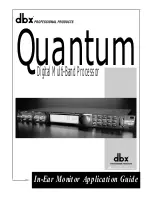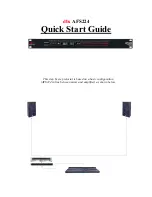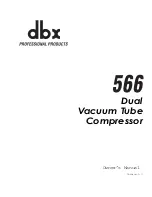
Troubleshooting
▲
WARNING
To avoid personal injury, property
damage or equipment damage caused
by sudden release of pressure or
explosion of accumulated gas, do
not attempt any troubleshooting or
disassembly without first isolating the
pilot from system pressure and relieving
all internal pressure from the pilot.
Pilots that have been disassembled
for repair must be tested for proper
operation before being returned to
service. Only parts manufactured by
Emerson should be used for repairing
this pilot.
Failure to Open or Sagging
Delivery Pressure
1. Adjusting spring on pilot may have been
tampered with.
2. Initial pressure may be down due to partially
closed supply valve, clogged strainer or
other obstruction.
3. Bleedport may have been omitted and an open
coupling substituted.
4. Orifice in No. 5A restriction elbow may be plugged.
5. Control pipe may be plugged. Most likely points
of obstruction are at shutoff valve and entrance to
delivery main.
6. Make sure heater is properly trapped and free
of condensate.
7. Pilot or main valve diaphragm may be broken.
Check for leakage around stem between
lever and diaphragm on pilot. Check the main
valve with air pressure in diaphragm chamber
before dismantling.
8. Leak in the thermostat bulb may allow heated fluid
pressure if sufficiently high to back up into the
thermal system to hold pilot closed.
Failure To Close – Overheating
1. Adjusting spring on pilot may have been
tampered with.
2. By-pass may be leaking.
3. Thermostat located too far from instantaneous
heater outlet.
4. Thermostat may be kinked or broken or have lost
its fill. Alternately warm and cool thermostat 10°F /
-12°C above and below its set point. If thermostat
is operative, the pin between the lever and
pressure diaphragm will become loose and snug
as the temperature stem on opposite end of the
lever moves up and down.
5. Orifice in bleedport may be plugged.
6. A lift of condensate to a hot well may require
more pressure in heater than the heated medium.
Arrange drainage of the heater by gravity or install
a pump to lift condensate.
7. Main valve or pilot may be held open by foreign
matter. To determine which valve leaks:
a. Close inlet stop valves and 1/4 in. / 6.35 mm
control valve.
b. Remove bleedport bend so pilot will exhaust
to atmosphere.
c. Remove all compression from pressure
adjusting spring.
If steam issues from the end of the bleedport bend on
the pilot, there is an obstruction between it’s seat and
disk. Steam blowing back from the bleedport on the
downstream side of the valve indicates that the main
valve disk is held open by foreign matter. Leakage
of either valve requires dismantling. See Dismantling
section for instructions.
Erratic Temperature Control
1. Thermostat installed too far from heater outlet.
2. Improper trapping or erratic discharge of trap.
3. Lift of condensate to hot well may require more
pressure than that called for by the medium
flowing through the heater. Arrange to drain
condensate by gravity or lift it with a pump.
4. Sticky check valve in return line.
5. Poor circulation through heater. Constant
circulation should be employed.
6. Valve too large for the heater or heater too large
for the load.
7. Valve installed too far from heater.
8
Types T124 and T134






























